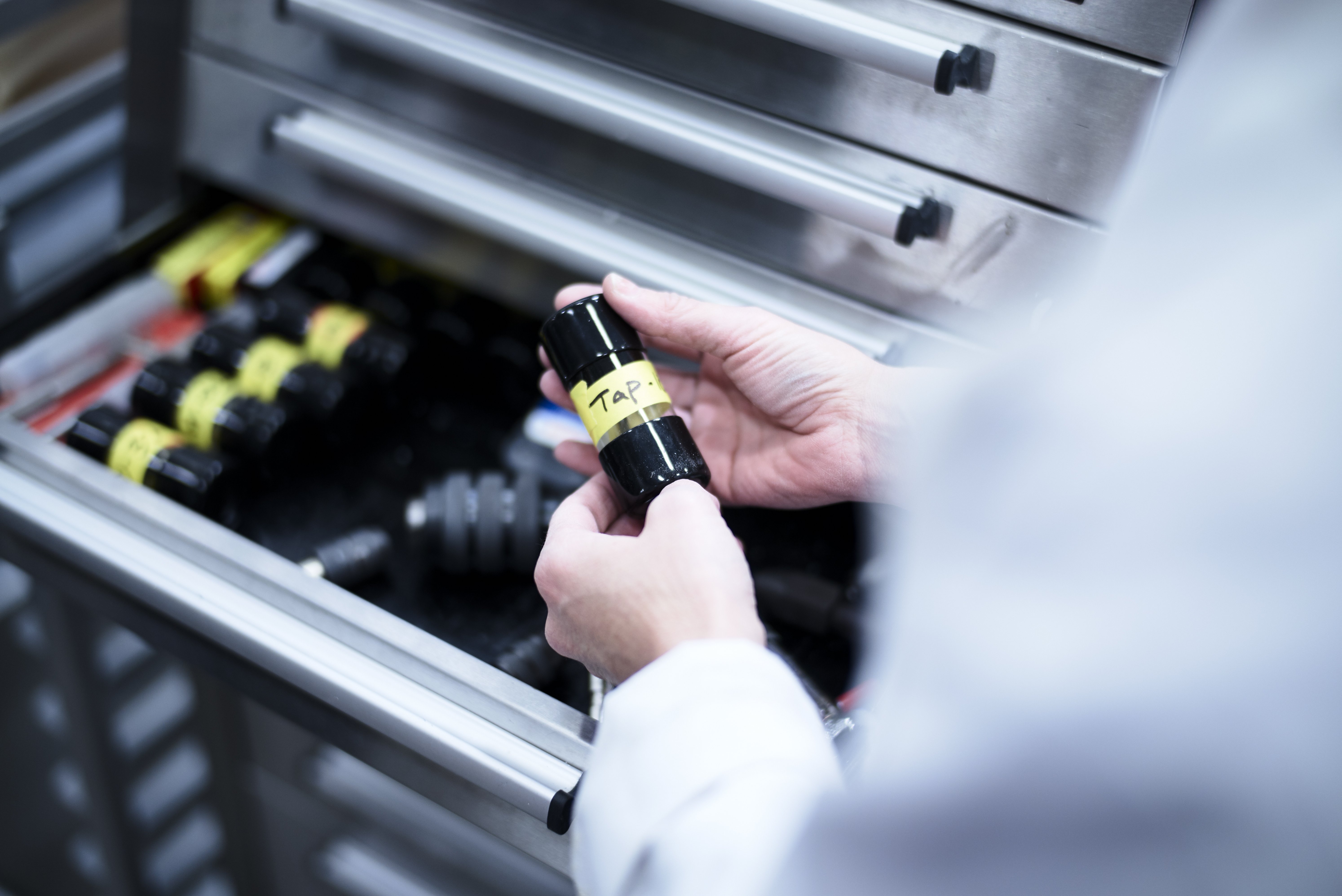7 Reasons Why You Should Include Additive Manufacturing in Your Value Chain
-
By
Marie-Christine Flibotte
June 12 2023
-
Tech tips and tutorials

For many manufacturers, using additive manufacturing (industrial 3D printing) in the value chain is one of the best ways to optimize their production processes. All businesses want to increase productivity while reducing expenses. So any link in the chain that can provide a competitive advantage must be carefully considered.
Here are seven good reasons to include an additive manufacturing service in your value chain.
1. Speeding Up Your Product Development
2. Parts that Meet Your Requirements
3. A Wide Choice of Materials To Meet Various Needs
4. A Real Impact on Profitability
5. Deployment in Various Industries
6. Optimal Supply Chain Management
7. Production Flexibility
1. Speeding Up Your Product Development
With technologies and materials used in additive manufacturing, you can manufacture your prototypes faster and more efficiently. In fact, parts can be produced from a drawing executed by CAD in just a few hours. No need for moulds or tremendous amounts of time and money—just an idea.
Parts can be tested within days instead of weeks or months, allowing you to quickly verify their operation. So iterations can be actively made while avoiding the management and long delays of traditional processes.
In short, this manufacturing method will help you save time both for your prototyping and for the launch of your production.
2. Parts that Meet Your Requirements
Industrial 3D printing frees you from the constraints linked to traditional manufacturing methods. It allows you to create complex geometries, add new features or functions, or significantly customize parts.
The parts’ customization and complexity become simple, regardless of the quantity required, since there are no start-up costs when using 3D printing for manufacturing. Plus, because design iterations are easily applied, making this process simple and more accessible, there are no limits when it comes to adapting parts to specific needs.
3. A Wide Choice of Materials To Meet Various Needs
The technologies and the raw materials used in additive manufacturing cover a wide range of needs. With industrial 3D printing, engineers can choose between several material options which can meet different technical requirements, standards and equivalences with the material approved for the final production.
It is important to accurately identify your needs. Should the part be flexible or rigid? Should it be robust and very durable? Heat-resistant or flame retardant? Food grade or medical grade? There is an endless number of uses for each product, and there is also an endless number of materials to choose from in industrial 3D printing.
Do not hesitate to contact a specialist if you are struggling to define the right material and process for your needs. The solution might be just at hand!
4. A Real Impact on Profitability
We talk a lot about the speed of execution of additive manufacturing, but other factors also contribute to making it a profitable process.
Production of Robust Yet Lighter Parts
Additive manufacturing undoubtedly helps lighten the parts. In fact, some advanced thermoplastics have an excellent weight-to-strength ratio. In some cases, they can even replace metal parts or section of parts. For example, there are PEI, PEKK, PEEK, Nylons loaded with carbon fiber, which are high-performance thermoplastics.
In addition, since 3D printing allows you to easily create complex shapes, you can produce robust parts while using less material and setting different types of filling. The “honeycomb” filling is a great example. By using less material, this type of production is less expensive.
Reduction of Material Losses
With 3D printing, a so-called “additive” process, the manufacture of parts requires a smaller quantity of material compared to so-called “subtractive” manufacturing processes. This is an optimal use of the base material. By avoiding waste, this technology can be more profitable for companies.
Optimal Manufacturing Solution for Low-Volume Production
If you need to produce in small quantities, additive manufacturing is the ideal solution. In fact, traditional methods such as plastic injection make small volumes challenging or too expensive due to the investments required for tools or moulds.

5. Deployment in Various Industries
If you believe that additive manufacturing is reserved for a few industries, think again! Today, this technology is a big part of just about every area you can think of. From industrial sectors to aerospace, medical and transport, additive manufacturing applications are constantly multiplying, both in large companies and in SMEs and start-ups.
Any industry can greatly benefit from it, you just need to know how to identify the right opportunities for 3D printing. It can also be used by different groups and departments within the same company to support R&D, methods, assembly, packaging, product development, quality assurance, operations, training and tooling.
Aerospace
Aerospace already uses a lot of parts made with industrial 3D printing. It includes, among others, air ducts, cabin dividers, interior panels and finishes, etc.
Defense and security
Defense and security companies are using additive manufacturing to promote responsiveness, shorten supply chains and even reduce costs. Here are some typical applications in this sector: parts for MRO (maintenance, repair, and operations), interior and exterior components of vehicles and aircraft, various tooling, etc.
Ground transportation
The specialized transportation and automotive industries often use additive manufacturing to develop their prototypes and tooling. They also use this technology for their part production, particularly for small quantities of complex interior parts.
Healthcare
There is an extensive number of applications in the medical field. Just think of orthosis and the various components of medical devices. These are all applications that require unique products, specific surface finishes and standards to be met. Additive manufacturing is perfectly suited for this industry, as long as the 3D printing specialist has the equipment and quality system necessary to meet the requirements.
6. Optimal Supply Chain Management
Additive manufacturing can have various uses within your company. For example, the research and development department can benefit greatly from it through its flexibility and speed of execution.
But let’s see how this technology contributes to improving your productivity in general.
- Additive manufacturing can improve existing processes with printed moulds, jigs, accessories, machine components, and various equipment.
- As additive manufacturing does not require prior investment in tooling or moulds, it is ideal for increasing productivity, and for reducing costs and lead times.
- Since parts are quickly produced on demand, your company does not have to carry a heavy inventory. Your parts are stored "virtually" in digital CAD format and can be printed as needed. This reduces logistical efforts, for example on transport and inventory.
- Large-format additive manufacturing makes it possible to consolidate several parts together, and therefore eliminate some assembly and handling steps while reducing the number of suppliers involved and the risks associated with a complex supply chain.
Optimization of the supply chain is not always the first benefit that comes to mind when discussing the benefits of 3D printing, yet it is a significant factor.
7. Production Flexibility
Additive printing is ideal when you have to adapt quickly to changes. Do you regularly need to produce complex parts urgently or in low-volume production? Additive manufacturing can be the answer. Do you need a product that doesn’t exist or that will take you weeks to procure? Just print it!
To compare your available options, consult a 3D printing professional to get a personalized 3D printing quote.
Additive Manufacturing, a Technology that Takes You from Design to Production
With the assistance of an experienced and skilled specialist, 3D printing enables the resolution of complex problems, from prototype design to production. Undoubtedly, accessing suitable industrial equipment is imperative for your projects’ success; however, the outcomes heavily rely on proficient design skills and the capacity to anticipate potential obstacles.
If you are interested in implementing additive manufacturing in your value chain, contact us. Our experts will be happy to advise you.


